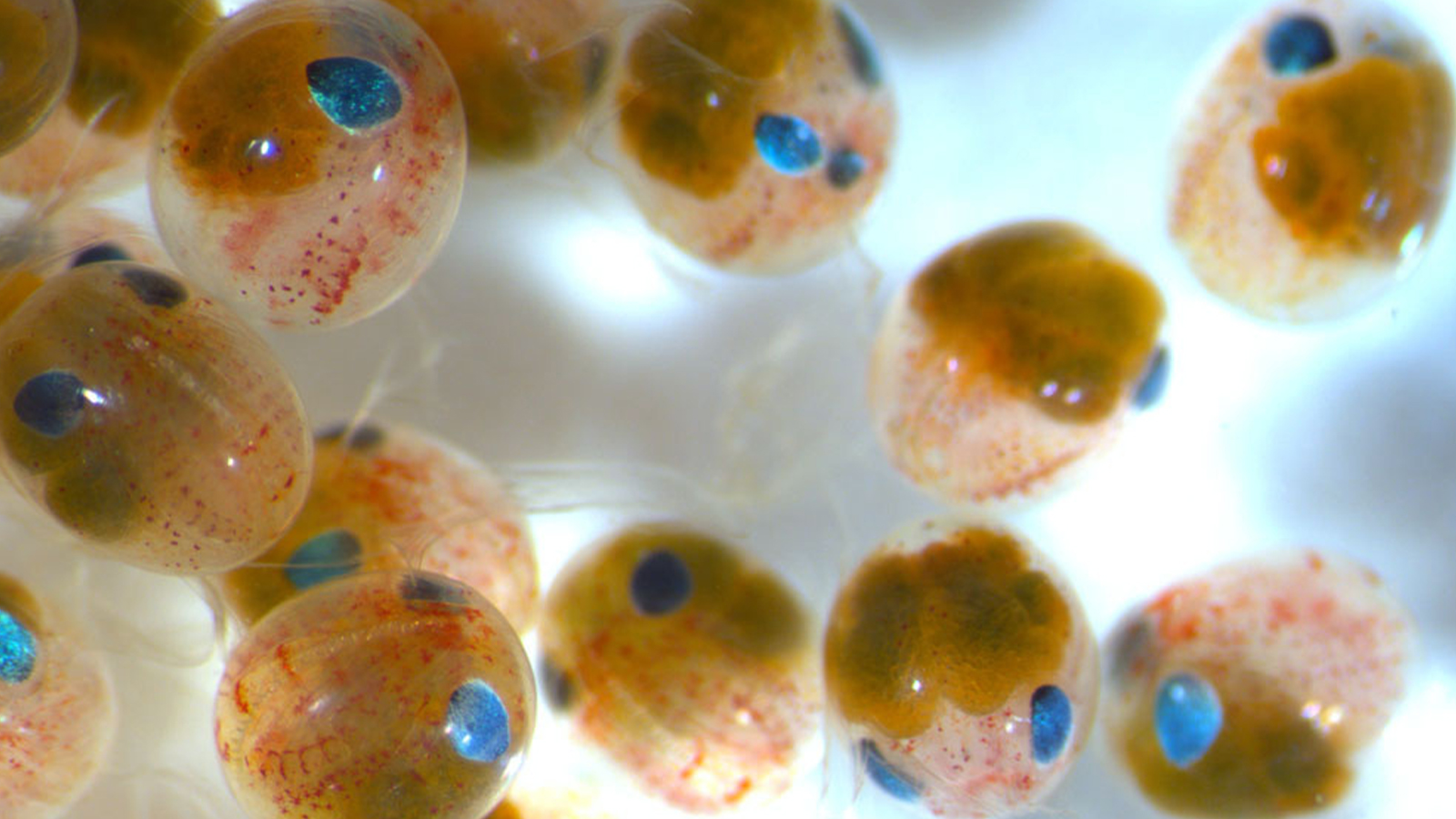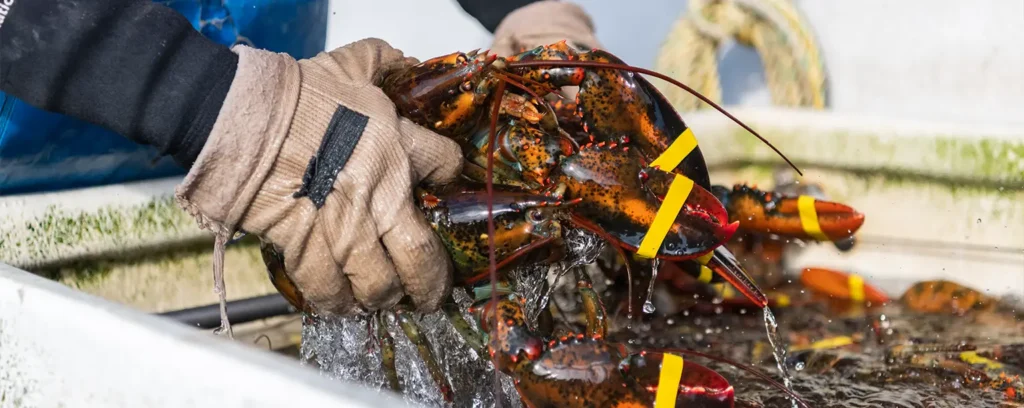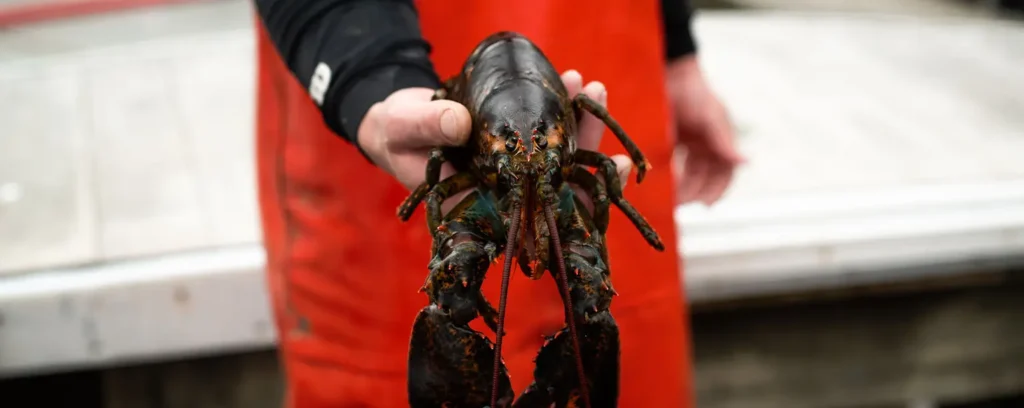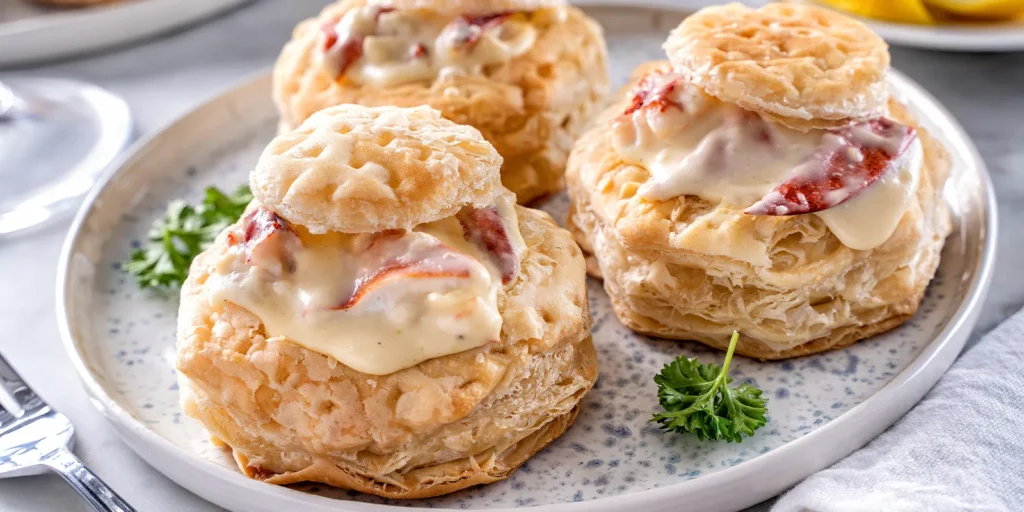
The Life Cycle of a Lobster
Lobsters live much longer than you might expect – and this is not the only surprise they have in store. Maine lobsters have a complex lifespan, so even as you enjoy eating them, you can learn more about this interesting marine crustacean. At ShopLobster, we take pride that our lobsters come from ethical and local Maine sources and we believe that respecting your meal for more than just its taste enhances the entire experience.
How Maine Lobsters Reproduce
Lobster reproduction happens sexually, with male sperm and female eggs. The actual reproduction process starts when adult females are ready to shed their shells – a normal process called molting. During molting, the female lobster takes in excess water. The water pushes against the shell from the inside, making it split. Soon, the female lobster emerges with a new shell. This leaves her particularly vulnerable, covered only by a soft shell that offers little protection. So, before the molting process actually begins, the female must first find a male to protect her – but not just any male. Female lobsters only want winners, and males must fight to earn their place. Lobster fights are violent; they can even lose parts of their body such as their antennae or legs. But they know what they’re doing and why. Male lobsters fight to establish dominance over other males – the dominant male lobsters will mate first. In fact, when a male lobster dominates an area, females actually “wait in line” to mate with him. Male lobsters will also maintain stable dominance hierarchies when in captivity. After a fight, the dominant male releases pheromones through special nozzles on their face. A pheromone is a chemical related to sexual attraction. The female lobsters also release this chemical to signal to the male lobster they’re ready to mate. Once chosen, the male lobster allows the female to move into his burrow. After a few days, the female will shed her shell, and they mate.
Safe in the Burrow
After mating, the vulnerable female stays in the male’s burrow – this way, she is protected during the time it takes for her new shell to form and harden. In the meantime, she lets other females know they are coupled up with special pheromone signals. After this process ends, the female leaves, allowing the next female in the area to mate with the dominant male.
That’s a Lot of Eggs
A female lobster can carry live sperm for up to two years and decides when she wants to fertilize eggs. The number of eggs a female lobster carries can vary, but the average is anywhere between 3,000 and 75,000. Female lobsters begin releasing eggs at the base of her third pair of walking legs. She will begin this after about 9 to 12 months after mating. She passes the eggs by the seminal receptacle, fertilizing them with the stored sperm. The number of fertilized eggs varies, but it can reach up to 100,000! The female carries the eggs on the underside of her tail for another 9 to 12 months; the amount of time will depend on conditions and species. During this time, if a Maine lobster fisherman catches a lobster with visible eggs, the lobster must be immediately returned to the sea. First, the fisherman puts a notch on her tail signaling that this egg-bearing female is forever protected as long as she is in the waters of Maine. Lobster eggs develop at different rates, so they may not all hatch at the same time. In this new stage, they are called larvae.
Larval Stages of Maine Lobsters
After the eggs hatch, lobster larvae are about the size of a pea, and transparent. Their shape allows them to easily drift in the ocean to their new homes. But only around 3% of the larvae survive since many predators get to them during this stage. The ones that survive feed on tiny zooplankton. The lobster’s exoskeleton doesn’t expand, so when the time comes for them to grow, they need to shed their shell (molt). The larvae will start molting, growing larger with each molt. The larvae can take up to 50 days to reach the metamorphic post-larval stage. At this point, they finally look like tiny lobsters. They stop floating and start living on the bottom of the ocean. During this phase, again, only a small percentage of the lobsters survive. It is estimated that out of every 50,000 eggs, only 2 will become legal-sized adults.
Juvenile Stage of Maine Lobsters
After finding an ideal shelter, the tiny lobster starts a new life – their juvenile life. They are still quite vulnerable for a year, but they can get by, feeding on small prey such as amphipods and isopods. After growing a bit more and feeling more confident in their ability to protect themselves from predators, the juvenile lobsters start venturing out to find food. Lobsters grow slowly, reaching adulthood after 5 to 10 years, molting and developing new shells each time they need more space. With each molt, lobsters can increase their length by up to 15% and their weight by up to 40%. This is why a lobster’s age can be estimated by the size of its shell.
Adult Maine Lobsters
Maine Lobsters have been known to live for over 100 years, and they keep growing throughout their entire lives. This is because lobsters never stop producing a growth-inducing enzyme called telomerase. As a result, some huge lobsters can be found in the waters of Maine. While theoretically lobsters could keep growing and live forever, the older a lobster gets, the harder it is for them to molt. Molting takes an exorbitant amount of energy, and each molt is harder than the last. Although lobsters can live a long life, they will eventually succumb to predation, infection, or exhaustion. Maine lobsters will reach sexual maturity once they reach adulthood – which, as previously mentioned, can take up to 10 years. Then, the reproductive cycle of Maine lobsters will start all over again, from mating to molting until adulthood, fighting for dominance, to bearing eggs, to a new brood of lobster babies that will grow and live for many decades in the cold, clear waters off the coast of Maine. At ShopLobster, we believe that understanding the life cycle of the lobster before it arrives at your door will only enhance your experience. To explore the full range of products we offer, please visit our Store. You can also explore the dozens of other informational resources available at ShopLobster to help you understand how our lobster cultivation is ethical and sustainable, and understand that our local lobster fishermen are committed to ensuring that live Maine lobster will make its way to tables across the country for generations to come.




